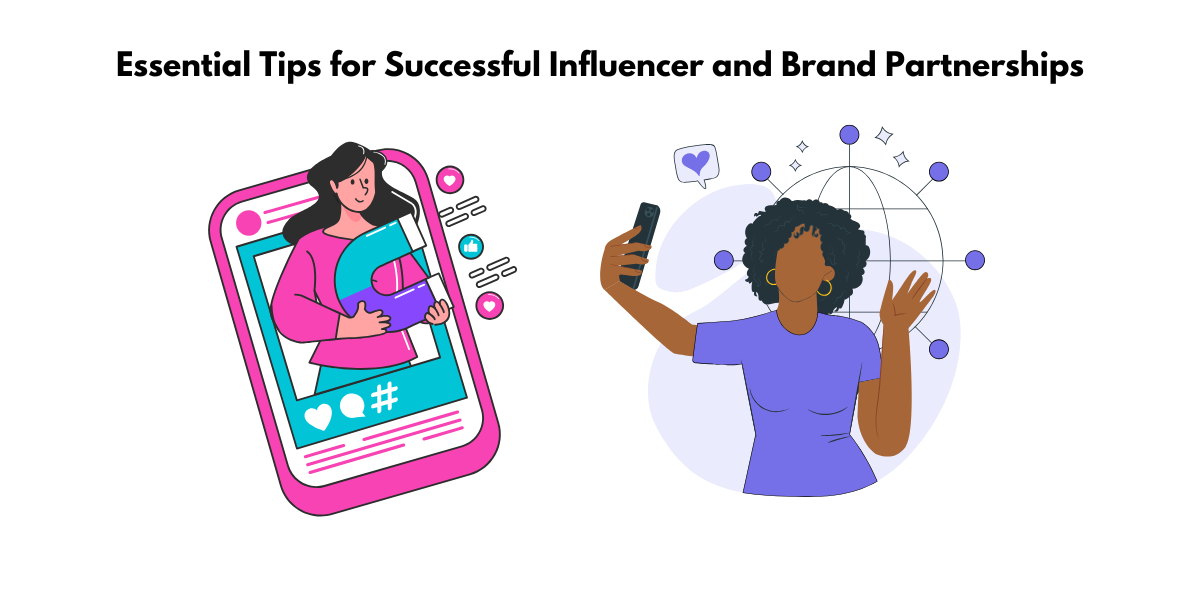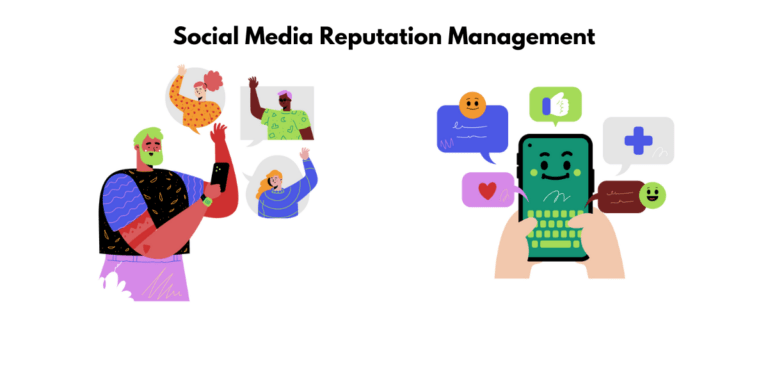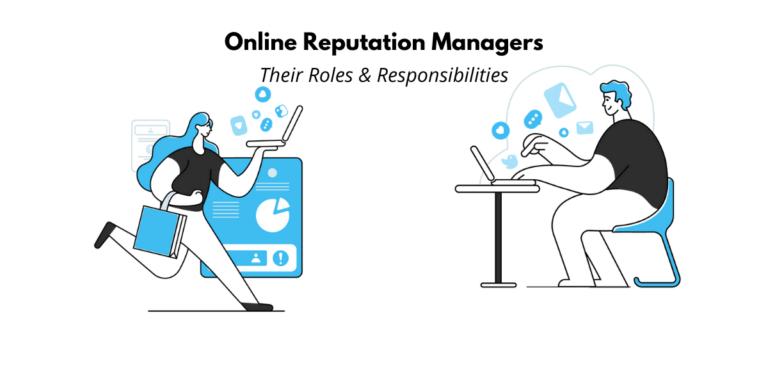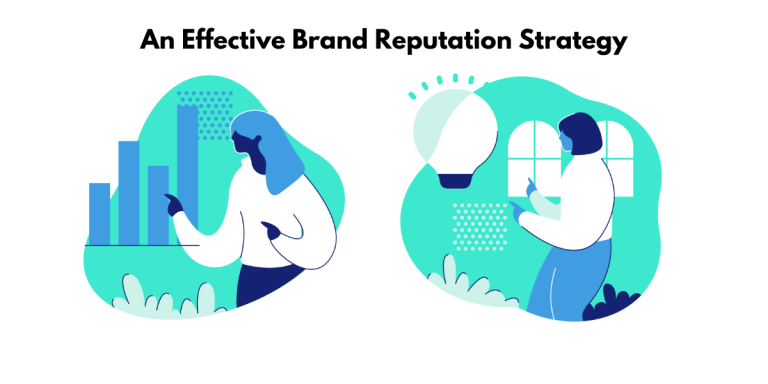Understanding Influencer Collaborations
Different Types of Collaborations
In the landscape of digital marketing, influencer collaborations play a pivotal role in amplifying brand reach and engagement. These collaborations can take several forms, each offering unique benefits and opportunities. Product collaborations involve influencers showcasing your brand’s offerings, often through unboxings or tutorials. Sponsored content allows influencers to create dedicated posts integrating your brand’s message authentically. Event collaborations, such as hosting giveaways or joint live sessions, foster a direct connection with audiences. Lastly, long-term ambassador programs leverage an influencer’s ongoing brand advocacy, building trust and sustained engagement.
Benefits of Strategic Brand Partnerships
Strategic brand partnerships with influencers can significantly enhance visibility, drive engagement, and increase sales conversions. By leveraging the credibility and reach of influencers, brands can tap into new, targeted audiences in an organic way. Increased authenticity and relatability are core benefits, as influencers can convey your brand’s message through content that resonates personally with their followers. Additionally, these partnerships can lead to higher returns on investment, as well-targeted influencer campaigns often yield more significant results compared to traditional advertising channels.
Furthermore, collaborations can foster brand loyalty and community building, thanks to influencers’ established trust with their audiences. Partnering also allows for creative content opportunities that showcase products innovatively. Finally, strategic partnerships often lead to valuable insights into consumer preferences and behavior, allowing brands to refine their marketing strategies effectively.

Common Mistakes to Avoid
When diving into influencer collaborations, several common pitfalls can hinder your campaign’s success. A key mistake is failing to align with influencers whose values and audiences match your brand. This misalignment can result in content that feels forced and disconnects with both the influencer’s audience and your target demographic. Another frequent error is neglecting to outline clear and measurable goals. Without explicit objectives and key performance indicators (KPIs), it’s challenging to assess the campaign’s impact.
Insufficient communication can also derail partnerships. Brands must establish open, regular dialogue with influencers to ensure expectations, timelines, and creative visions are aligned. Similarly, offering poor compensation or lacking transparency about remuneration can lead to mistrust and misunderstandings. Lastly, some brands overlook the importance of allowing influencers creative freedom. Remember, influencers know what their audience loves best, so imposing too many restrictions can stifle their authentic voice, ultimately reducing the campaign’s impact.
Crafting a Successful Collaboration Strategy
Setting Clear Goals and KPIs
Setting clear goals and key performance indicators (KPIs) is a foundational step in crafting a successful influencer collaboration strategy. Begin by identifying the primary objectives of your campaign—whether it’s increasing brand awareness, boosting sales, or enhancing audience engagement. Once your goals are defined, determine specific KPIs that will allow you to measure success effectively. Common KPIs include reach, impressions, engagement rates, click-through rates, and conversion rates.
It’s crucial to tailor these KPIs to align with your overall marketing strategy and the specific outcomes you wish to achieve. For instance, if raising brand awareness is the goal, focus on metrics like reach and impressions. Conversely, if driving sales is the priority, tracking conversion rates will be more beneficial. Establishing these metrics will not only guide the campaign but also help monitor progress and inform future strategies.
Aligning with the Right Influencers
Aligning with the right influencers is crucial for a fruitful collaboration. Begin by thoroughly researching influencers whose audience demographics, values, and content style align with your brand. Utilize tools like social media analytics platforms to evaluate their reach, engagement rates, and audience authenticity. Look beyond follower counts; an influencer with a smaller but highly engaged audience can often produce more valuable results than one with a larger, less engaged following.
Additionally, assess their previous partnerships to ensure they haven’t promoted competing brands or products, as this can dilute your message. It’s also vital to engage with influencers who share a genuine interest in your product, ensuring their endorsements feel natural and believable. Establishing such alignment not only fosters a strong working relationship but also amplifies the effectiveness of your campaign, leading to more meaningful interactions with your target audience.
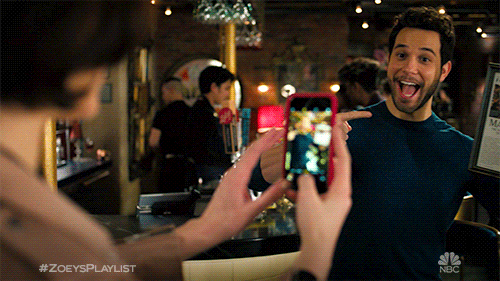
Budgeting and Compensation Strategies
Effective budgeting and compensation strategies are essential when planning influencer collaborations. It starts with setting a realistic budget based on the campaign’s scope, influencers’ reach, and the type of content required. Vary your approach according to the influencer’s stature—nano and micro-influencers may command lower fees while providing high engagement rates, while macro-influencers and celebrities generally require larger investments.
Compensation can take various forms, such as flat fees, commission-based payments, or product exchanges. It’s vital to negotiate terms that are fair and motivational, aligning them with expected outcomes like deliverable types or audience reach. Consider also incorporating performance-based incentives to encourage influencers to exceed your expectations in driving results.
Transparency in compensation not only builds trust with influencers but also ensures that budget allocations are directly tied to specific goals and deliverables. Establishing clear contracts and agreements with all financial terms delineated prevents misunderstandings and helps manage budget constraints effectively.
Establishing Effective Communication and Guidelines
Establishing effective communication and clear guidelines with influencers is pivotal for successful collaborations. Start by developing a comprehensive brief outlining your brand’s goals, target audience, key messages, and any non-negotiable elements for the campaign. This document serves as a foundation for setting clear expectations about deliverables, timelines, and content approval processes, ensuring alignment from the outset.
Regular check-ins and feedback loops are also essential. Schedule periodic communications to discuss progress, address any issues, and allow influencers to voice their questions or concerns. This ongoing dialogue fosters a collaborative relationship and empowers influencers to deliver their best work creatively and authentically.
Additionally, guides or style manuals that detail brand voice, visual standards, and content dos and don’ts can be invaluable. These resources help influencers maintain consistency in messaging while allowing for their personal spin. By providing structured yet flexible frameworks, you enable influencers to portray your brand naturally, resulting in more genuine and impactful content.

Innovative Collaboration Ideas
Product and Sponsored Content Collaborations
Product and sponsored content collaborations are among the most common and effective types of influencer partnerships. In a product collaboration, influencers receive your product, which they then incorporate into their content, such as unboxings, reviews, or tutorials. This approach lets potential customers see the product in action and builds social proof through the influencer’s endorsement. Sponsored content, on the other hand, involves influencers creating posts or videos dedicated to promoting your brand, often accompanied by a direct call to action or a promotional offer for followers.
The success of these collaborations hinges on creativity and authenticity. Encourage influencers to integrate your product naturally into their content in a way that resonates with their audience. Providing them with key talking points ensures that your brand’s unique selling propositions are highlighted while allowing plenty of room for their personal touch.
The benefits of these collaborations include increased brand visibility, enhanced credibility through third-party endorsements, and the potential for high return on investment due to direct audience engagement. However, challenges like influencer authenticity and audience alignment must be carefully managed to avoid pitfalls.
Hosting Events and Takeovers
Hosting events and social media takeovers with influencers can dramatically enhance engagement and create unique, memorable experiences for your audience. Events, whether virtual or in-person, allow influencers to interact directly with their followers while showcasing their brand. This interaction can take many forms—product launches, exclusive behind-the-scenes tours, or live Q&A sessions—each providing an immersive way to engage audiences and create buzz.
Social media takeovers involve an influencer temporarily controlling your brand’s social media accounts to share content with their unique perspective. This strategy not only introduces your brand to the influencer’s followers but also provides fresh content for your existing audience. It can involve posting stories, creating reels, or hosting live streams.
The chief benefits include real-time interaction, broadened reach, and enhanced authenticity, as influencers bring their signature style to the forefront. However, successful execution requires thorough planning and clear guidelines to maintain brand alignment while allowing creative freedom.
Utilizing User Generated Content (UGC)
User-Generated content (UGC) harnesses the creativity and voices of your audience, amplifying your marketing efforts through authentic, relatable content. When influencers promote UGC, it not only drives engagement but also builds a community around your brand. UGC can take many forms, from fan photos and reviews to creative challenges where customers are prompted to share their personal experiences with your product.
To leverage UGC effectively, encourage influencers to initiate campaigns that invite participation, such as starting a hashtag challenge or contest. This strategy not only raises brand awareness but also generates a diverse range of content that can be repurposed across marketing channels. Moreover, UGC endorsed by influencers tends to carry greater credibility due to the influencer’s established trust with their audience.
The primary benefits of utilizing UGC include cost-efficiency, since your community creates the content, and the enhancement of brand loyalty through increased audience interaction. However, it’s essential to ensure proper usage rights and credit for contributors to maintain transparency and respect.
Ambassador Programs and Long-Term Partnerships
Ambassador programs and long-term partnerships with influencers can provide sustained brand visibility and loyalty. These engagements entail influencers committing to represent and advocate for your brand consistently over time, often becoming the face of your campaigns. This approach fosters a deeper connection between the influencer and the brand, leading to more authentic and genuine content creation.
With ambassador programs, influencers are typically more integrated into the brand, participating in everything from product launches to exclusive brand events. This involvement boosts trust and reassurance among potential customers, as they see familiar faces consistently endorsing a brand. Long-term partnerships also allow for better strategic alignment and planning, resulting in content that not only promotes products but also tells a cohesive brand story over time.
Key benefits include continuous reach, increased brand advocacy, and enhanced consumer trust due to the ongoing nature of the relationship. Moreover, long-term relationships often come with cost advantages compared to one-time campaigns, as they enable deeper collaboration and negotiation.
However, these partnerships require careful selection of influencers to ensure alignment with brand values and goals. It’s also important to maintain regular communication and provide creative freedom to retain genuine engagement from the influencer and their audience.

Measuring Success and Impact
Key Metrics to Monitor
Monitoring the right metrics is essential to gauge the success and impact of your influencer collaborations. The most crucial metrics are those that align with your campaign goals. For brand awareness initiatives, focus on reach and impressions to track how far your message is spreading. Engagement metrics, such as likes, comments, shares, and saves, are vital for assessing audience interaction and interest.
Conversion rates and traffic metrics come into play when the objective is to drive sales or encourage specific actions. Insights into website traffic from influencer campaigns, tracked via UTM links or affiliate codes, can provide valuable data on conversion pathways. Additionally, monitoring follower growth during and post-campaign can help you understand how the partnership influences your brand’s social media presence.
Lastly, sentiment analysis, though harder to quantify, offers essential insights into audience perception and brand affinity following an influencer’s content. This can be assessed through comments and direct feedback from your target audience.
Advanced Analytics and Reporting Tools
Advanced analytics and reporting tools are indispensable for accurately measuring the impact of influencer collaborations. These tools offer insights into engagement metrics, audience demographics, and campaign performance in real time, ensuring a data-driven approach to marketing strategies. Platforms like Google Analytics, Hootsuite, and Sprout Social provide comprehensive dashboards that track traffic, conversion rates, and social media interactions from influencer-driven content.
In addition, influencer-specific platforms such as Traackr and AspireIQ offer functionalities to monitor influencer performance, manage relationships, and analyze return on investment (ROI) across campaigns. These tools often include features like sentiment analysis and competitor benchmarks, enabling you to gauge not only your campaign’s success but also how it stacks up against industry standards.
By leveraging these advanced tools, brands can refine their strategies, identify areas for improvement, and optimize future collaborations. This approach ensures that marketing efforts align closely with desired outcomes and that resources are allocated effectively.
Reviewing and Refining Strategies
Reviewing and refining strategies after an influencer campaign is crucial for long-term success. Start by conducting a comprehensive analysis of the campaign’s performance against the original objectives and KPIs. Identify which elements of the collaboration were most effective and where improvements can be made. Use insights from metrics such as engagement rates, conversion rates, and audience sentiment to assess what resonated well with your target audience.
Gather feedback from the influencers involved to understand their perspective on the collaboration. They can provide valuable insights into audience reactions and suggest potential enhancements or innovations for future campaigns. This feedback loop is important for aligning future strategies with both brand goals and influencer capabilities.
Adjust your strategy based on data-driven insights and feedback. This might mean optimizing content formats, selecting different influencers whose audience may better match your target demographic, or experimenting with new campaign types. Continual refinement ensures that your influencer marketing efforts remain dynamic and responsive to market trends and consumer behavior.
Addressing Challenges in Influencer Collaborations
Navigating Creative Control and Flexibility
Navigating the balance between creative control and flexibility with influencers is vital to successful collaborations. It’s essential to set clear guidelines that protect your brand’s identity while allowing enough creative freedom for influencers to connect authentically with their audience. Start by outlining indispensable elements, such as key messages, tone, and any visual or linguistic brand standards, in a comprehensive brief.
While maintaining these core components, encourage influencers to infuse their unique style and voice into the content. Remember, they understand their audience best and how to engage them effectively. Collaboration in brainstorming sessions can yield innovative ideas that align with your brand and resonate with your followers, striking the perfect balance between control and creativity.
A mutually beneficial approach involves maintaining open communication and being receptive to influencer inputs. By doing so, you cultivate a partnership where both parties feel valued and invested in achieving the campaign’s goals.

Mitigating Risks and Ensuring Authenticity
Mitigating risks and ensuring authenticity in influencer partnerships is crucial for maintaining brand integrity and building trust with consumers. Begin by conducting thorough due diligence on potential influencers. Evaluate their previous content and partnerships for alignment with your brand values and audience demographics. Comprehensive vetting helps you avoid associations with influencers involved in controversies or inauthentic practices, such as follower fraud.
Establish clear contracts outlining expectations, deliverables, and ethical guidelines. These contracts should include clauses on compliance with advertising standards and transparent disclosure of paid partnerships. This not only protects your brand legally but also reinforces authenticity in the influencer’s content.
Furthermore, encourage influencers to share genuine experiences and opinions about your product. Audiences are savvy and can discern when content feels forced or overly scripted. Genuine testimonials and stories enhance the credibility of both the influencer and your brand.
Finally, monitor campaign progress closely and adapt quickly if issues arise. This agility, combined with solid preparation and clear agreements, minimizes risks and ensures that collaborations remain effective and authentic.
FAQs
How do I select the right influencer for my brand?
To select the right influencer, ensure their audience, values, and content style align with your brand. Evaluate their engagement rates, reach, and past partnerships. Look beyond follower counts to gauge authenticity, using tools for follower analysis. Compatibility with brand image and delivery style is key to resonating with your target market.
What are effective ways to manage collaboration tasks?
Use project management tools, like Trello or Asana, to streamline tasks, deadlines, and communications. Establish clear goals and guidelines early and hold regular check-ins to track progress. Maintain organized documentation for all agreements and outlines. Fostering consistent, open communication with the influencer ensures smooth collaboration and goal alignment.
How much should I budget for an influencer collaboration campaign?
Budgeting for an influencer campaign varies widely based on influencer reach, project scope, and industry. Consider factors like influencer tier—micro, macro, or celebrity—and anticipated deliverables. Start with a clear campaign objective and allocate funds accordingly, planning for both direct costs and contingency. Research competitor spending as a benchmark for your industry.
What metrics indicate a successful influencer partnership?
Key metrics for a successful influencer partnership include engagement rate, conversion rate, and reach, which reflect audience interaction and potential sales. Track website traffic and sales data through links or discount codes provided in the campaign. Additionally, monitor audience growth and sentiment analysis to gauge brand perception and long-term impact.

